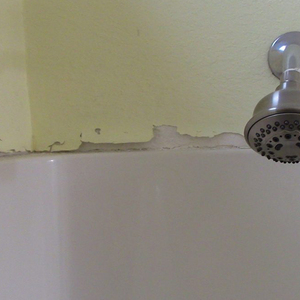I have a house that was built in 1933 (I believe), and does not seem to be well-insulated, if at all. I’m planning to eventually gut the interior walls, room by room, but more than likely I’ll be residing the house before that happens. Would it make sense to add a layer of styrofoam sheeting to the exterior, say 1 1/2 to 2 inches? What other issues would I be facing by doing this?
Thanks in advance!



















Replies
Area of the country would help with the advice.
Thick foam could cause problems with siding install, window install (if changed) and various trims. I used 1" foam sheeting but furred out the siding providing a rain screen in the process.
Adding Insulation
Our house is in central Wisconsin.
The current windows are replacement inserts in original frames, so I don't think I'll be replacing them any time soon. I'm thinking of simply building out the 1x4 exterior trim to compensate for the foam, and then wrapping all of the exterior wood with aluminum.
The house has a 12" overhang all around, so I don't think the additional thickness would be a problem with either drainage or aesthetics.
Well, there are several issues here. If you add insulation on the outside like you create problems around windows and doors where you have to rework the trim. This may be a simple problem or may be ugly. You also can run into situations where you begin to have trouble with roof overhang, if the roof has no eave extensions.
The foam makes it more difficult to apply the siding. When you get beyond 1" or 1.5" you need to use furring strips for siding nailers, adding even more to the wall thickness you need to compensate for.
Finally, in cold climates the foam tends to act as a vapor barrier and can capture moisture and cause rot. How serious of a problem this is depends on your climate and the composition of the wall (and is actually less likely to be a problem if the wall is poorly insulated otherwise).
Lots of info
on exterior foam over at GBA.
Start here: http://www.greenbuildingadvisor.com/blogs/dept/musings/calculating-minimum-thickness-rigid-foam-sheathing
Trapping moisture
"Finally, in cold climates the foam tends to act as a vapor barrier and can capture moisture and cause rot. "
There is absolutely no evidence of this; the opposite is true, as long as the foam is thick enough. See the link in David Meiland's post.
As long as the foam is thick enough. There's an equation to balance.
An equation?
I'm not sure what you mean by "an equation" -- all a builder needs to do is consult a table listing the minimum R-value of the exterior foam for various climate zones.
It's much more complicated than that. You have a temperature profile and a dewpoint profile, and you don't want the two lines to cross anywhere in the wall. There are simplifying assumptions you can make with some styles of construction, but there's no simple table that will give you valid results for all conditions.